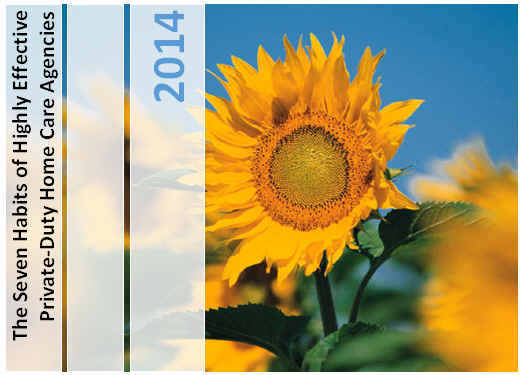One of the industry experts I learn from every time we speak is Ginny Kenyon, principal at Kenyon Home Care Consulting. Ginny helps open home care agencies and has given Ankota great inputs on our software. We at Ankota strongly believe that keeping elderly people healthy and comfortable in their homes (and out of the hospital) is an important step in the evolution of healthcare. Ginny is one of the pioneers driving moves in home health delivery. Enjoy her post (below).
Five-star ratings are a familiar tool in general. Although they are not new to many providers receiving CMS funds, such as skilled nursing homes and hospitals, home health star ratings are relatively new. And, be aware, hospice star ratings are coming in 2017.
Below, we introduce the basics of what home health star ratings are, as well as some potential problems home health agencies may encounter.
What Are Home Health Star Ratings?
Currently, there are two types of home health star ratings or tools helping customers make the best decisions about their health care.
1. Quality of care ratings, first introduced in July of 2105 are based on OASIS and Medicare claims data. Quality score calculations use 9 quality-of-outcome metrics and, in general, reflect how much patient conditions improve and how often they make a hospital visit.
2. Patient perception ratings. First available on the CMS website for home health in January of 2016, this rating category bases outcomes on patient surveys. Survey questions examine areas such as:
-
Agency education with patients on how to care for themselves
-
Patient understanding of how to take their medications
-
Reasons why medications are necessary
-
How thoroughly clinicians probe for possible medication side effects
Both sets of home health star ratings are available on Home Health Compare, a subsidiary website of Medicare.gov. The quality stars are meant to summarize or rate care providers. On the website, consumers are able to compare up to three agencies at a time. Like the data they summarize, the website gets quarterly updates.
Agencies receive a preview report before the newest home health star ratings are seen by the public. Agencies have a 3 month window to check the “star” data to be sure it is complete and accurate. During this time-frame, agencies may also request a data revision from CMS.
October Surprise to Health Insurance Companies
On October 12, 2016, the formula CMS uses to rate health insurance providers was adjusted. And it is big change! Now, companies previously receiving 4 and 5 star ratings, are a rarity. For example, Humana with 3/4 of its plans receiving 4 or 5 stars last year, estimates that level at about 37% today. As a result, Humana stock prices took at immediate and spectacular hit. Although the prices are a bit more stable now, the “ride” was rather unpleasant for the stockholders and plan customers.
Many in the home health industry are now wondering if a similar fate awaits them. For health insurers, the CMS 3 star rating is now the equivalent of what 4 stars used to be. And striving for a 5-star rating now seems as futile as “reaching for the stars.”
Problems With Home Health Star Ratings
Similar to the recent health insurance plan fiasco, consumer confusion will occur if the value of the home health stars suddenly change. However, currently there is other confusion plaguing home heath star ratings.
First, there is a major difference in the number of stars received for quality of care vs. from patient surveys. Patients rate agencies at 4 or 5 stars about 75% of the time, but only about 25% of homecare organizations got as many stars on the quality of care score. Nor does this difference stem from patients being over-generous on the surveys, but from the fact that Medicare purposefully uses a different formula to make 3 stars the norm on quality scores. This results in the two scores differing by one or even two stars.
The second cause of potential confusion arises due to the lack of sufficient surveys. There “should be” 100 surveys to base patient perception star ratings on, but there are often fewer. And if less than 40 surveys to calculate, no rating will appear for that agency.
Finally, quality star ratings can give false impressions due to the patient population home health cares for. Many conditions, such as CHF or diabetes, are not likely to be reversed even with the best possible care. And, if patients happen to live in a region lacking certain services, hospital visits will increase and lower the star rating.
Conclusion
Only by understanding the home health star ratings calculations can you hope to improve both your quality and patient-survey scores. Be sure to review your agency’s preview data and contact CMS if adjustments are needed. Getting your OASIS and claims submissions right the first and every time is a big part of this equation. Remember, your quality score calculations use OASIS quality-of-outcome metrics reflecting how much patient conditions improve.
Kenyon HomeCare Consulting is here to help! To learn more, contact us today at 206-721-5091 or schedule an appointment online.
This article, originally titled, WILL HOME HEALTH RATINGS SUFFER SAME FATE AS INSURANCE first appeared in Kenyon HomeCare Consulting blog.
------
For more Best Practices, you can download a free eBook Seven Habits of Highly Effective Home Care Agencies. Just click the link or the picture to download.
If you're interested in scheduling a live demo of our software solutions, just click the button below:
Ankota provides software to improve the delivery of care outside the hospital, focusing on efficiency and care coordination. Ankota's primary focus is on Care Transitions for Readmission avoidance and on management of Private Duty non-medical home care. To learn more, please visit www.ankota.com or contact us.





Your Comments :